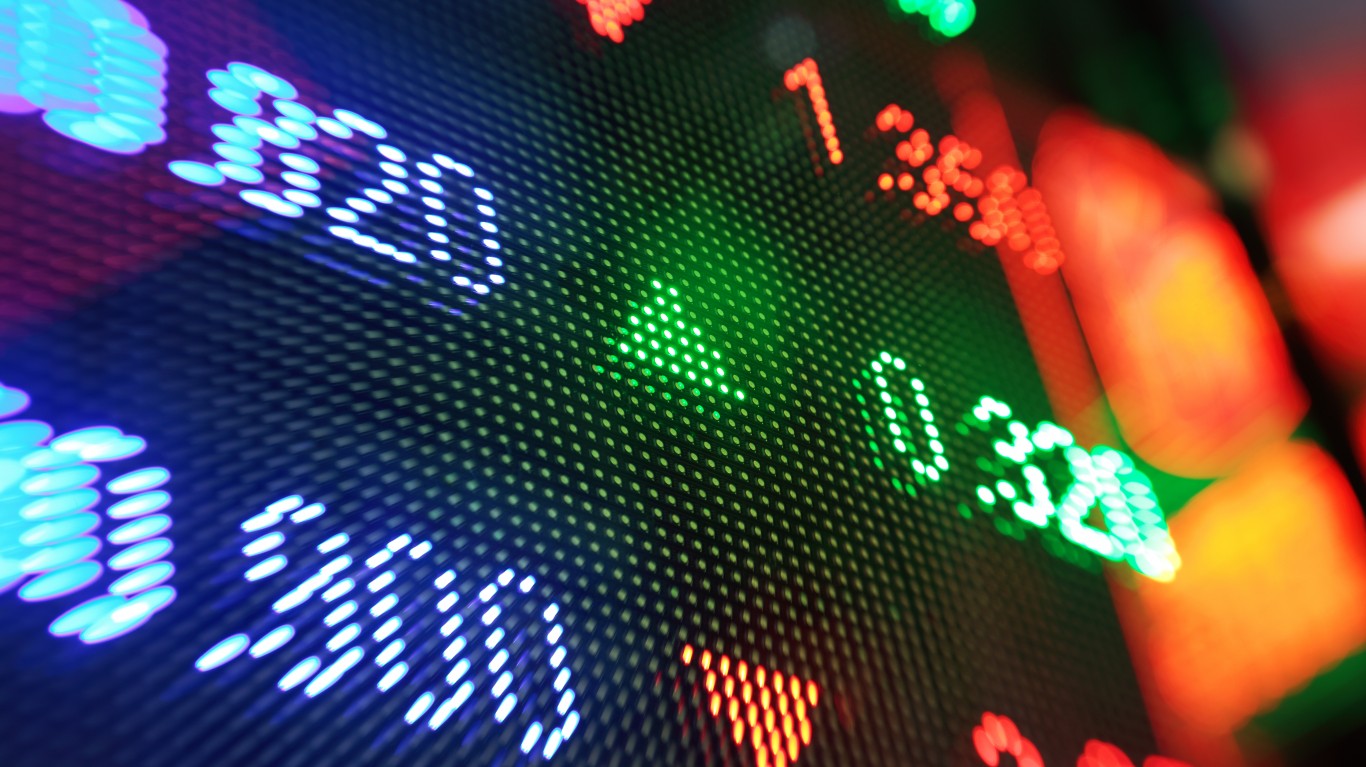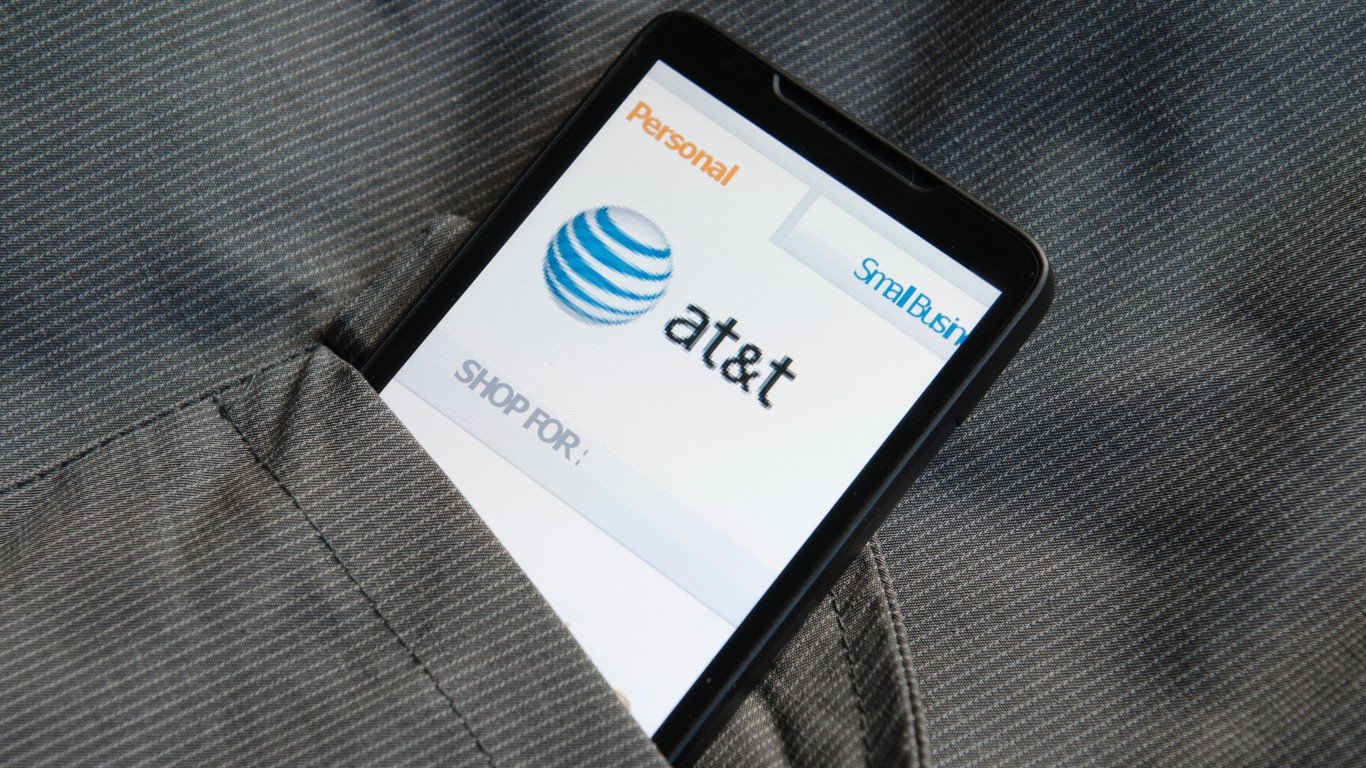

It seems amazing that the S&P 500 went from a continued raging bull market at the start of 2020, into the fastest recession of our lives, and then all the way back up to positive in record time. It’s almost as if the bear market never existed. Not so fast. While the S&P 500 managed to recapture all-time highs in August, many of its stocks and sectors are not participating in the economic recovery and bull market at all.
24/7 Wall St. has been screening the universe of actively traded stocks looking for those companies that have seen negative performance or that have lagged behind others during the stock market recovery since the V-bottom in March and since April. The verdict is simple: the breadth of the stock market recovery remains rather weak.
Many sectors of the economy remain under partial closure and many are effectively unable to operate at profitability and may not for the foreseeable future. Of the S&P 500 screen, we selected 40 of the top losing S&P 500 stocks that are down for the year, with losses ranging from over 30% to over 55%. In most cases, these were historically solid companies before the recession that are likely to survive afterward.
Note that investors need to be aware of a so-called value trap. Some stocks may look like screaming buys because their share prices have come down so much, but lower share prices and weaker fundamentals may not be “cheap” at all. Companies that have ended up in an industry facing secular changes or in which their own underlying fundamentals are weak will not feel like “value” over time.
To keep the value screen fair and reasonable for value investors, some sectors were eliminated due to permanent damage. Companies largely were excluded if their primary operations were tied to oil and gas, if they were the troubled major retailers and if they were major real estate owners (e.g., REITs). Companies reliant on travel and tourism (airlines, cruise lines, hotels) also were screened out due to the sector’s forced financial losses.
According to a screen from Finviz, 292 members of the S&P 500 still are down year to date (YTD). Of those that are negative YTD, 154 of them are down 20% or more, and 55 of those stocks are down by 40% or more, with 24 of them down 50% or more. There are also now 25 members of the S&P 500 Index with a market cap of less than $5 billion, which means they could be moved down to the S&P Mid-Cap 400 Index and replaced by “more modern and preferable” stocks if their shares do not recover.
Of the S&P 500’s top gainers, two stocks have gained over 100% YTD and 19 stocks with gains of between 50% and 100%. After those, there are another 30 with gains of 30% to 49% and another 31 stocks with gains between 20% and 30%.
While we are not using the Dow Jones industrials for screening purposes, 20 of the 30 Dow stocks have losses ranging from under 1% to 48.5%. That leaves just 10 of the 30 up YTD, and only five are up 10% or more (with Apple up a whopping 69%).
The long and short of the matter is that this new bull market is really a market of stocks rather than a stock market. The leadership companies have provided all the great gains, and companies in the old economy that do not have a great business model or that are deemed nonessential are feeling the sting. We have added some color on each company, included some trading history and included some Refinitiv consensus data.
Investors need to understand that the market losers often tend to stay losers for some time. These may take quite some time to recover, and history has proven that shopping for value in the reject bin will generate some companies that do not have any great place in the future. Here are 40 stocks from the S&P 500 that are down 30% or more so far in 2020.
1. Wells Fargo & Co. (NYSE: WFC) is the biggest loser among the S&P 500 banks, and its problems of a dividend cut and a Warren Buffet exodus are only part of the issue here. Wells Fargo has even joined the banks trading at a deep discount to book value because investors believe that its underlying book value will be far lower in the future. Wells Fargo stock is down 56% YTD, despite being down just 2.2% in the trailing 90 days. It recently closed at $23.64 a share, in a 52-week range of $22.00 to $54.75. It has a market cap of $97 billion, and its dividend yield is 1.7%. Analysts have a consensus price target of $29.72.
2. Under Armour Inc. (NYSE: UAA) was last seen down 55% YTD, and it is actually still up 18% over the past quarter despite its recent sell-off. Under Armour faced issues even before the pandemic, and Nike has managed to keep winning with its market dominance. Under Armour’s future turnaround looks less certain, based on a trading range of $9.50 to about $11.75 all summer. The consensus price target is $10.39. Under Armour stock last closed at $9.73, in a 52-week range of $7.15 to $21.96. It has a market cap of just over $4 billion.
3. PVH Corp. (NYSE: PVH) is a top apparel company, but the stay-at-home and athleisure trends have not worked so far for the company. Some of its brands include Tommy Hilfiger, Calvin Klein, Van Heusen, Izod and Geoffrey Beene, and it has licenses for brands including Speedo, Kenneth Cole, Michael Kors, DKNY and Chaps. PVH shares are still down 52% YTD, despite its stock being up 13% in the past 90 days. It recently closed at $50.13 a share, in a 52-week range of $28.40 to $108.06. It has a market cap of $3.6 billion. The consensus price target is $58.75.
4. DXC Technology Co. (NYSE: DXC), sometimes thought of as “the other IBM,” is down 50% YTD, even though it is up 20% in the past 90 days. This one is less known by the public as it was created by the merger of CSC and the enterprise services business of Hewlett Packard Enterprise. DXC Technology stock last closed at $18.68, in a 52-week range of $7.90 to $38.37. The company has a market cap of $4.7 billion and a consensus price target of $22.93.
5. Xerox Corp. (NYSE: XRX) seems pretty obvious, in that fewer offices means fewer copying and in-office needs. Xerox is down 49% YTD, even though it is up 10% over the past 90 days. With no HP merger and with limited prospects on its own, Xerox is finding itself as the tech leader that no one even remembers still exists. Xerox recently closed at $18.76, in a 52-week range of $14.22 to $39.47. Analysts have a consensus price target of $17.20. The market cap is $4 billion, and the dividend yield is 5.3%.
6. Western Digital Corp. (NASDAQ: WDC) has been a big disappointment as the rest of tech has held strong. Its shares were down more than 46% YTD and were down just over 20% in the past 90 days, after a poor earnings and guidance report. This has been far more disappointing than the 24.6% drop YTD for rival Seagate. Western Digital last closed at $33.71 a share, in a 52-week range of $27.40 to $72.00. It has a market cap of $10 billion and a consensus price target of $51.49.
Thank you for reading! Have some feedback for us?
Contact the 24/7 Wall St. editorial team.
 24/7 Wall St.
24/7 Wall St.


